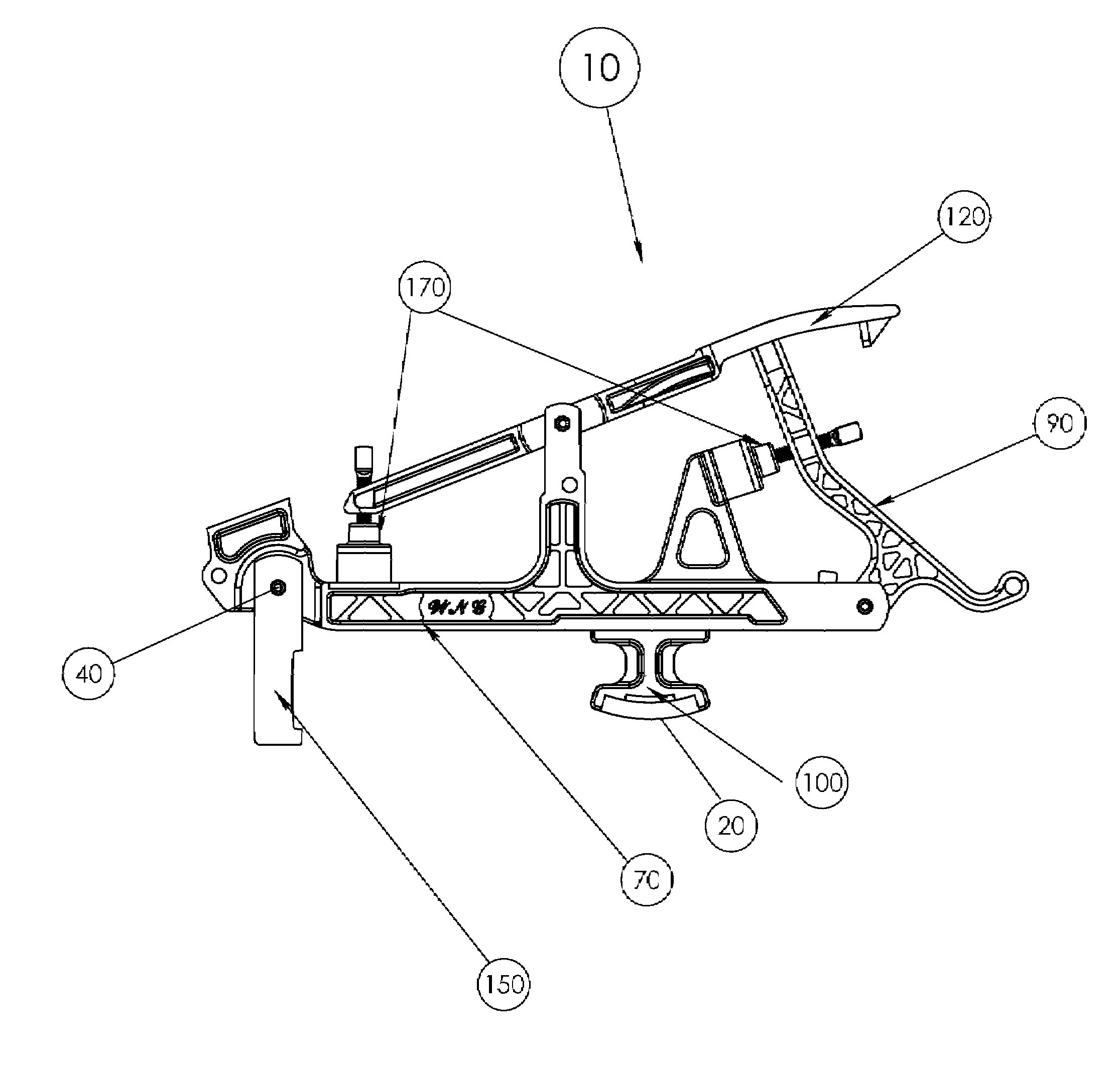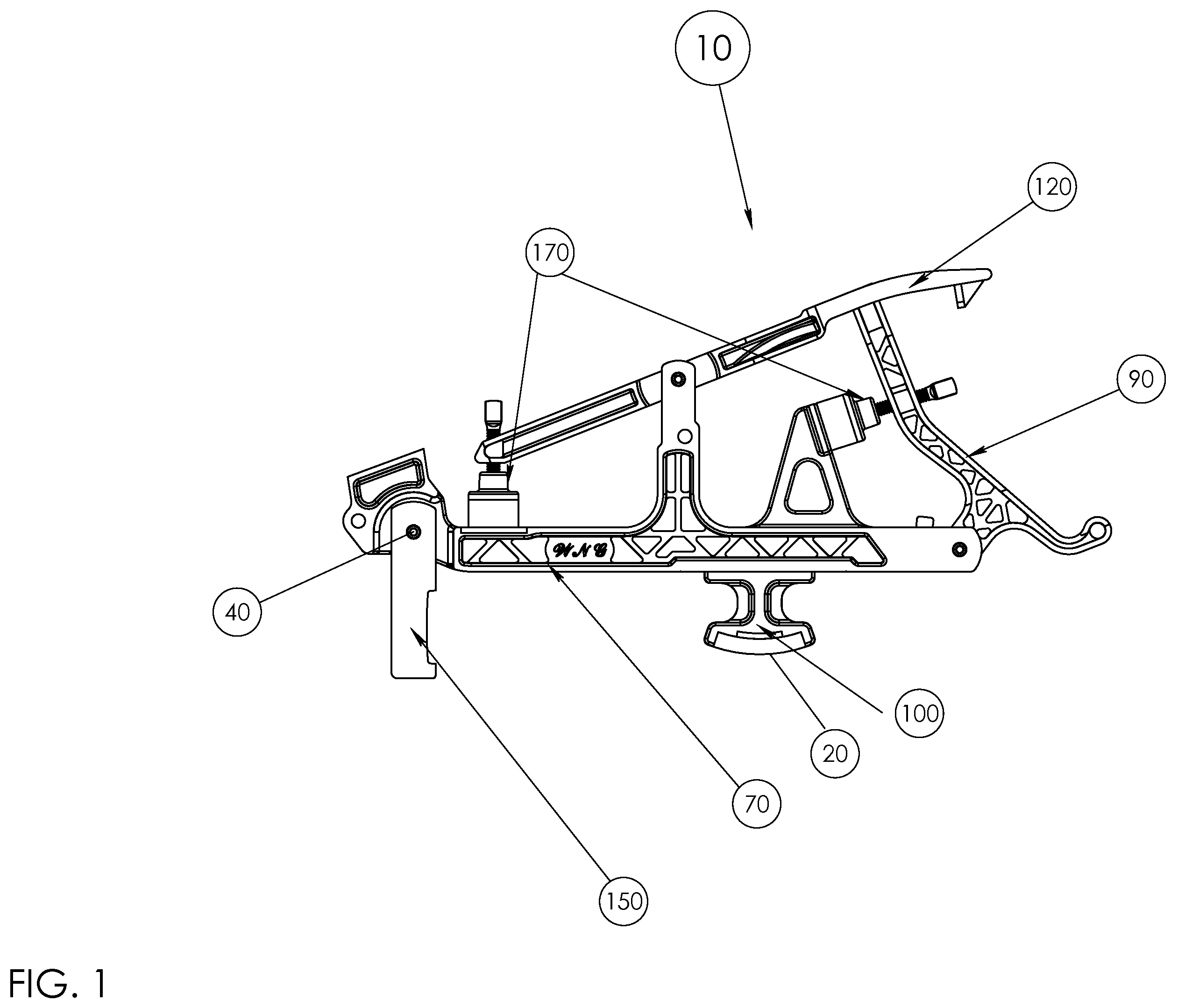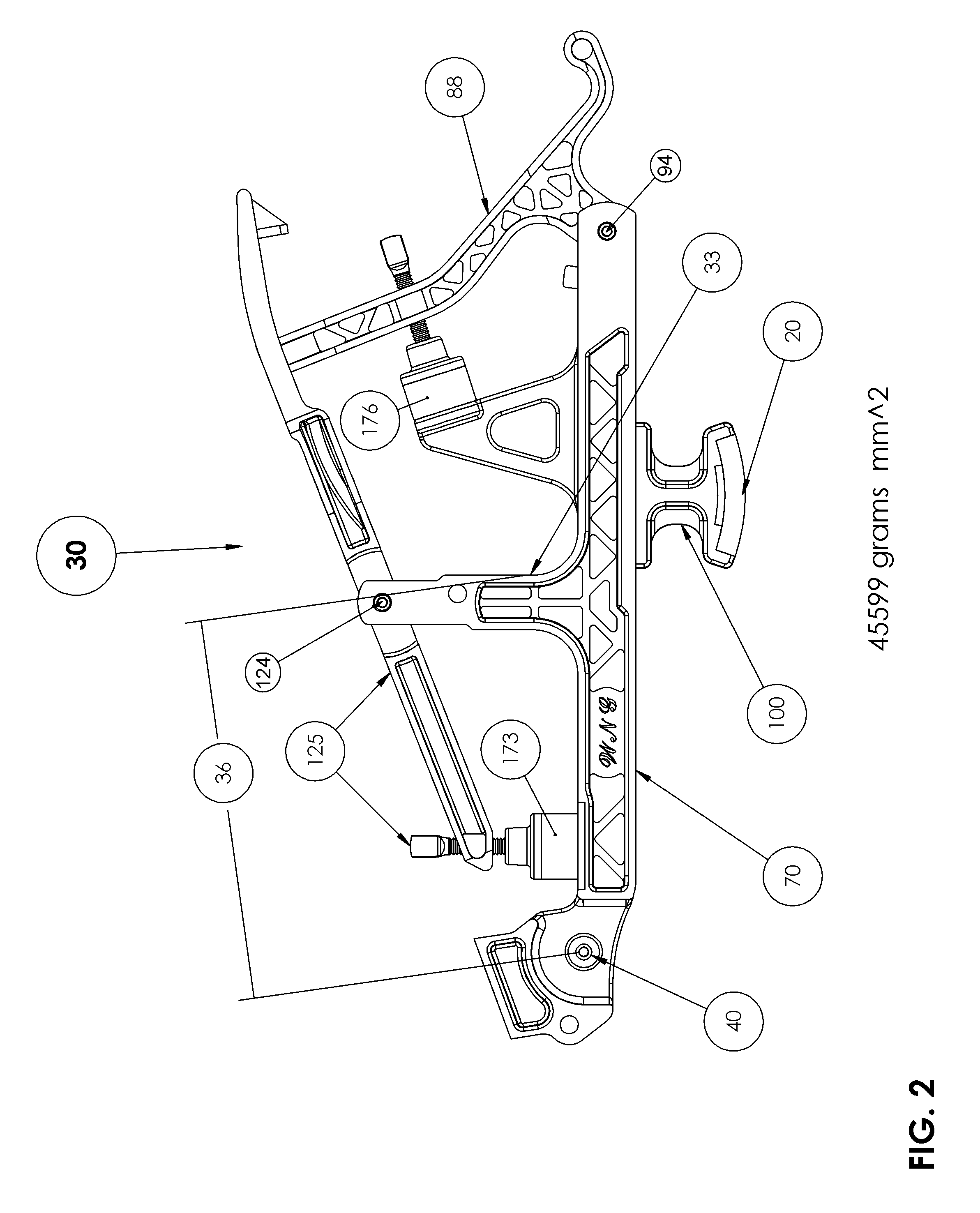Grand piano composite piano action
a piano action and grand piano technology, applied in the direction of instruments, strings, etc., can solve the problems of inefficiency of wood raw materials, laborious and costly process of hole drilling, and binding in the action,
- Summary
- Abstract
- Description
- Claims
- Application Information
AI Technical Summary
Benefits of technology
Problems solved by technology
Method used
Image
Examples
Embodiment Construction
[0027]The primary factors affecting dynamic mass of a piano action are: 1) mass of the composite piano action 10 at the capstan contact point 20, 2) moment of inertia of the Repetition Assembly 30 about the Repetition Assembly center of rotation 33, 3) moment of inertia of the Key 50 about the Key center of rotation 60, and 4) mass of the Key 50. The Repetition Assembly 30 is the Repetition Base 70 and the following items assembled to it: Jack Assembly 88, Balancier Assembly 125, and heel 100.
[0028]The static weight of the Repetition Assembly 30 at the point where the capstan contacts the cushion on the heel, hereafter known as the capstan contact point 20, is critical to dynamic mass. A mode of this invention has a weight at this point of 14.1 grams. The two prior art equivalents weigh 16.6 grams (Kawai R2) and 21.9 grams (Kawai R1). We have achieved a 15% reduction over prior art composite grand piano actions.
[0029]The moment of inertia of a rigid body rotating about a fixed axis ...
PUM
 Login to View More
Login to View More Abstract
Description
Claims
Application Information
 Login to View More
Login to View More - R&D
- Intellectual Property
- Life Sciences
- Materials
- Tech Scout
- Unparalleled Data Quality
- Higher Quality Content
- 60% Fewer Hallucinations
Browse by: Latest US Patents, China's latest patents, Technical Efficacy Thesaurus, Application Domain, Technology Topic, Popular Technical Reports.
© 2025 PatSnap. All rights reserved.Legal|Privacy policy|Modern Slavery Act Transparency Statement|Sitemap|About US| Contact US: help@patsnap.com



